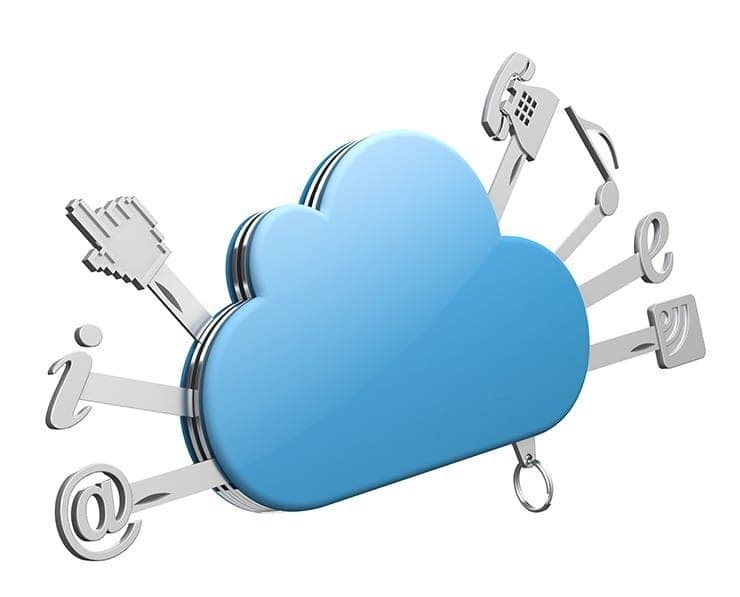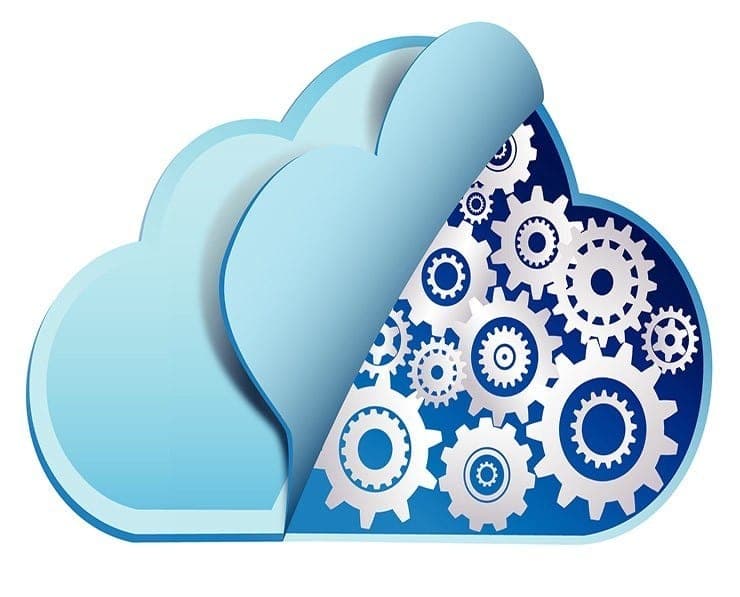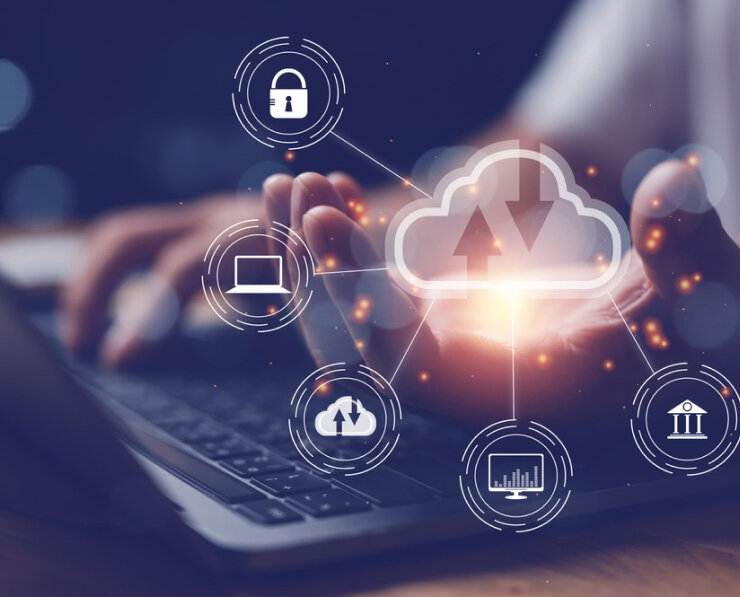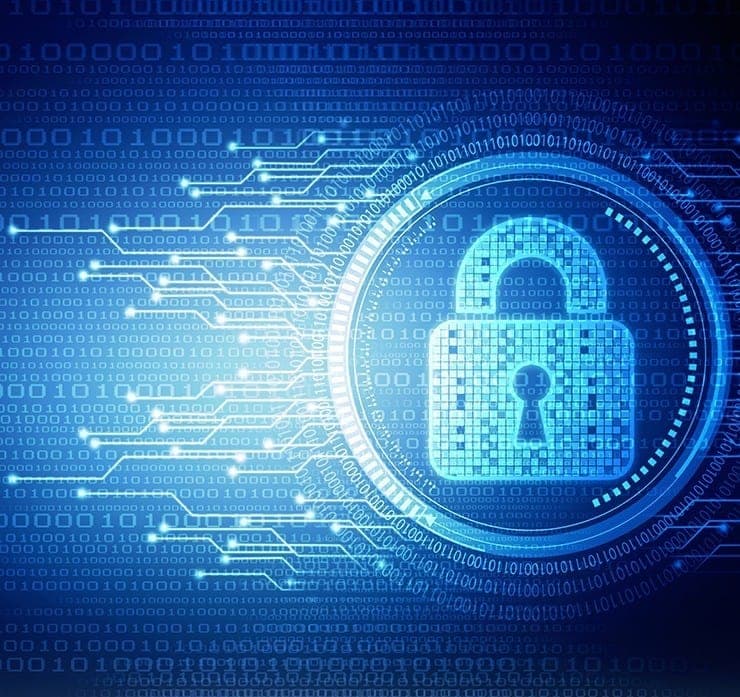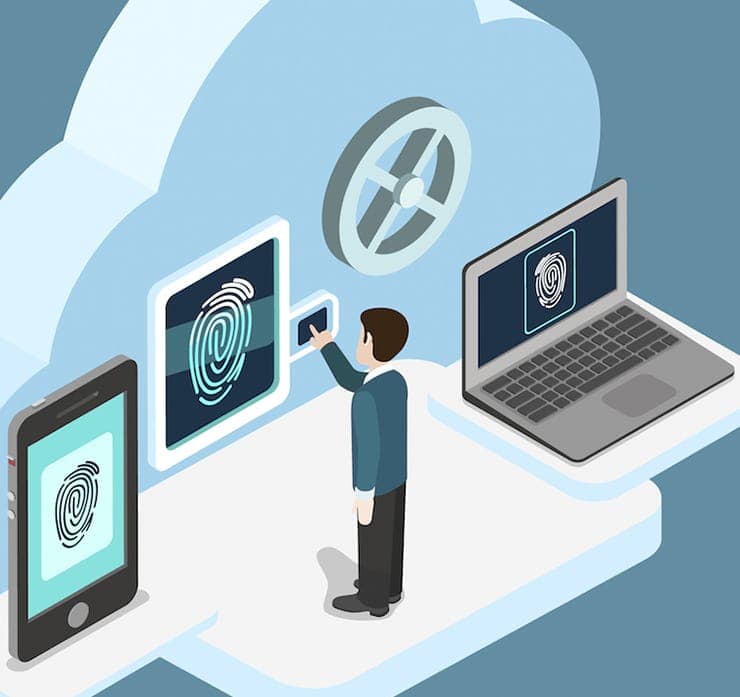Student Feedback
N10-008: CompTIA Network+ (N10-008) Certification Video Training Course Outline
Module 1 - Introducing Reference...
Module 2: Network Pieces and Parts
Module 3: Stay on Top of Your To...
Module 4 - Understanding Network...
Module 5 - Selecting WAN Technol...
Module 6:Connecting Networks wit...
Module 7 - Using Ethernet Switches
Module 8 - Demystifying Wireless...
Module 9 - Addressing Networks w...
Module 10 - Addressing Networks ...
Module 11 - Explaining IP Routing
Module 12:Streaming Voice and Vi...
Module 12 - Virtualizing Network...
Module 14 - Securing a Network
Module 15 - Monitoring and Analy...
Module: Examining Best Practices...
Module 17 - Troubleshooting Netw...
Module 18: Preparing for the Com...
Module 1 - Introducing Reference Models and Protocols
N10-008: CompTIA Network+ (N10-008) Certification Video Training Course Info
CompTIA N10-008 Network+ Masterclass: Boost Your IT Career
Experience 140 interactive lab exercises, including some ethical hacking scenarios, designed to teach you networking fundamentals!
What You Will Learn From This Course
• Gain a comprehensive understanding of networking fundamentals required for IT roles such as Help Desk Technician, Junior Network Administrator, and Systems Support Specialist
• Master the CompTIA Network+ N10-008 exam objectives and practical applications of networking theory
• Learn to build and configure virtual machines using VirtualBox to create realistic lab environments
• Gain hands-on experience with cloud computing platforms such as Amazon AWS to deploy and manage cloud-based servers
• Simulate networks using Cisco Packet Tracer to understand real-world networking scenarios without requiring physical hardware
• Understand and apply network security best practices to protect systems and data in professional environments
• Learn introductory ethical hacking skills to understand potential network vulnerabilities and security considerations
• Explore the OSI model in depth, understanding each layer’s functions, protocols, and practical applications
• Identify and work with different types of networking cables, connectors, and network devices, including routers, switches, and access points
• Understand IP addressing and subnetting concepts, and practice configuring subnets for various network scenarios
• Learn how to create VLANs and manage segmented networks to improve performance and security
• Configure routing protocols such as OSPF and EIGRP to enable efficient network communication
• Work with key networking services and protocols, including DHCP, DNS, TCP/IP, and others, to build fully functional networks
• Gain practical experience configuring networking devices and troubleshooting common network issues
Learning Objectives
The primary objective of this course is to provide students with a solid foundation in networking fundamentals while also giving them practical skills to implement and manage network environments. By the end of this course, learners will be able to:
• Demonstrate a clear understanding of networking concepts and protocols as outlined in the CompTIA Network+ N10-008 exam
• Build and manage virtual and cloud-based network environments for practice and real-world scenarios
• Apply security best practices in network design and management, including understanding ethical hacking principles and threat mitigation
• Configure routers, switches, access points, and other networking devices for efficient and secure communication within an organization
• Understand and apply IP addressing, subnetting, and VLAN creation to design scalable and organized networks
• Implement routing protocols effectively to optimize network performance
• Troubleshoot common networking issues with confidence using practical lab exercises and simulations
Target Audience
This course is designed for a wide range of learners who want to establish or expand their careers in IT and networking. The ideal participants include:
• Entry-level IT professionals seeking to build foundational networking skills for Help Desk or Junior Network Administrator roles
• Individuals who have completed CompTIA A+ certification and want to advance their networking knowledge
• IT support personnel who want hands-on experience in configuring, managing, and troubleshooting networks
• Aspiring network engineers looking to prepare for certifications like CompTIA Network+ and eventually Cisco CCNA
• Students or professionals interested in gaining practical cybersecurity skills alongside core networking concepts
• Anyone seeking a structured learning path with hands-on labs and interactive demonstrations to build confidence in real-world networking scenarios
Requirements
This course is designed to accommodate learners with varying levels of experience in IT. While prior exposure to networking concepts can be helpful, it is not strictly required. To ensure learners get the most out of this course, the following requirements are recommended:
• A personal computer capable of running virtual machines and networking simulation software such as VirtualBox and Cisco Packet Tracer
• Reliable internet connection to access course materials, cloud services, and virtual lab environments
• Basic familiarity with operating systems, including Windows and Linux, is beneficial but not mandatory
• Willingness to practice hands-on labs regularly to reinforce theoretical concepts
Prerequisites
To succeed in this course, learners should ideally meet the following prerequisites:
• Basic understanding of computer hardware and software concepts, typically gained through foundational IT courses or certifications
• Familiarity with fundamental IT concepts such as file systems, operating systems, and troubleshooting basic technical issues
• CompTIA A+ certification is recommended for a smoother transition into networking concepts, but is not required
• Motivation to engage in practical lab exercises and experiments to develop real-world networking skills
This course is structured to take learners step-by-step from foundational networking principles to practical implementation in virtual and cloud environments. By the end of the first part, students will have a strong grasp of networking theory and be prepared to explore hands-on configurations, security practices, and advanced concepts in subsequent modules.
The course begins by introducing core networking concept,s including the OSI model, network topologies, and basic protocols. Learners will understand the structure and purpose of each OSI layer and how these layers interact to facilitate data transmission across a network. Practical exercises will reinforce understanding, enabling students to visualize the flow of data through networks and diagnose connectivity issues effectively.
Participants will also explore IP addressing and subnetting in depth. Subnetting is a critical skill for organizing and managing networks efficiently, and students will learn techniques for calculating subnets, assigning addresses, and designing scalable network infrastructures. VLAN creation and management will be introduced to help students segment networks for improved performance, security, and organizational efficiency.
Hands-on lab demonstrations are a key component of this course. Students will configure routers, switches, and access points in virtual environments, simulating real-world networking scenarios. Through these exercises, learners will develop troubleshooting skills, understand network device configuration, and apply theoretical knowledge to practical situations. These labs provide a safe environment to experiment with network setups without affecting live systems.
Security is integrated throughout the course, starting with foundational best practices for network protection. Students will learn how to identify potential threats, implement safeguards, and understand the basics of ethical hacking to evaluate vulnerabilities in network environments. This knowledge prepares students to apply proactive security measures in professional IT settings.
By combining theory with extensive practical exercises, this course ensures that learners not only understand networking concepts but also gain confidence in applying them. From building virtual machines and cloud servers to simulating networks using Cisco Packet Tracer, students will have multiple opportunities to practice and refine their skills. This combination of theory and hands-on experience is essential for preparing for the CompTIA Network+ exam and for developing the skills necessary for IT careers.
Course Modules / Sections
This course is organized into structured modules to provide a comprehensive understanding of networking concepts while integrating practical skills essential for IT professionals. Each module builds on the previous one, ensuring learners develop a solid foundation before advancing to complex topics.
Module 1: Introduction to Networking
The first module introduces the fundamental concepts of networking. Students will explore what a network is, types of networks, and their purpose in modern IT environments. This module covers network topologies, including star, mesh, bus, and ring configurations. Learners will understand the advantages and limitations of each topology and how they affect network design and performance.
Module 2: Network Components and Devices
This module focuses on essential networking devices, including routers, switches, hubs, access points, and firewalls. Students will learn how each device functions within a network and the role it plays in facilitating communication between devices. Practical exercises include identifying devices, connecting them in virtual lab environments, and configuring basic settings to ensure proper network operation.
Module 3: Network Protocols and Communication
In this module, learners will explore key networking protocols such as TCP/IP, DHCP, DNS, HTTP, HTTPS, FTP, and SNMP. The focus is on understanding how protocols enable devices to communicate effectively. Students will perform hands-on exercises to configure protocol settings and monitor network traffic, developing the ability to troubleshoot protocol-related issues.
Module 4: IP Addressing and Subnetting
This module teaches students how to assign and manage IP addresses within a network. Learners will understand IPv4 and IPv6 addressing, calculate subnets, and apply subnet masks effectively. Practical exercises allow students to design subnets for hypothetical organizations, ensuring efficient utilization of IP addresses and proper network segmentation.
Module 5: Virtualization and Cloud Networking
Learners will explore virtualization concepts using tools such as VirtualBox and VMware. This module also covers cloud networking using Amazon AWS and other cloud platforms. Students will build virtual machines, configure virtual networks, and deploy cloud servers, gaining hands-on experience in modern networking environments.
Module 6: Network Security Fundamentals
This module emphasizes security practices essential for protecting network resources. Topics include firewalls, VPNs, intrusion detection systems, and encryption methods. Learners will also be introduced to ethical hacking concepts, gaining awareness of vulnerabilities and how to mitigate them. Practical exercises include configuring firewalls and simulating security scenarios in virtual environments.
Module 7: Routing and Switching
This module covers advanced concepts in routing and switching. Students will configure routing protocols such as OSPF and EIGRP, and learn about static and dynamic routing. Switching concepts, including VLAN creation, trunking, and port configuration, are explored through hands-on labs that simulate real-world network setups.
Module 8: Network Troubleshooting and Management
In the final module, learners focus on diagnosing and resolving network issues. Topics include common connectivity problems, device misconfigurations, and protocol errors. Students will perform troubleshooting exercises using network simulation tools, gaining confidence in resolving issues efficiently. The module also covers monitoring tools and performance management techniques to maintain optimal network operations.
Key Topics Covered
The course covers a wide range of essential networking topics designed to prepare learners for real-world IT environments and the CompTIA Network+ N10-008 exam.
• Network Fundamentals: Definitions, types, topologies, and design considerations
• Networking Devices: Routers, switches, access points, hubs, firewalls, and network interface cards
• OSI Model: Understanding the functions and interactions of all seven layers
• Networking Protocols: TCP/IP, UDP, DHCP, DNS, HTTP, HTTPS, FTP, SMTP, SNMP, and more
• IP Addressing: IPv4 and IPv6, subnetting, subnet masks, and addressing schemes
• VLANs and Network Segmentation: Configuring VLANs, trunking, and inter-VLAN routing
• Routing Protocols: OSPF, EIGRP, static routing, dynamic routing, and route summarization
• Virtualization: Creating and managing virtual machines using VirtualBox and VMware
• Cloud Networking: Deploying and configuring cloud servers with Amazon AWS and other platforms
• Network Security: Firewalls, VPNs, IDS/IPS, encryption, and security best practices
• Ethical Hacking Basics: Introductory penetration testing and vulnerability assessment
• Network Troubleshooting: Diagnosing connectivity issues, analyzing network traffic, and resolving protocol errors
• Network Management Tools: Monitoring software, performance metrics, and logging for efficient management
• Cabling and Connectors: Types of network cables, connectors, and installation techniques
• Wireless Networking: Access point configuration, security protocols, and wireless standards
Teaching Methodology
The teaching methodology of this course is designed to balance theory with extensive hands-on practice, ensuring learners gain both conceptual understanding and practical skills.
The course begins with video lectures that explain core networking concepts in detail. Each lecture is accompanied by visual demonstrations, diagrams, and examples to reinforce understanding. Learners are encouraged to take notes and follow along with practical exercises to apply theoretical knowledge immediately.
Hands-on labs form a critical component of the teaching methodology. Each module includes guided lab exercises where students build, configure, and troubleshoot networks in virtual environments. Tools such as VirtualBox, VMware, and Cisco Packet Tracer provide realistic simulations of real-world networks, allowing learners to practice safely and effectively.
Interactive exercises are integrated throughout the course to promote engagement and critical thinking. Learners perform tasks such as configuring IP addresses, creating VLANs, deploying cloud servers, and simulating network traffic. These exercises reinforce learning outcomes and provide practical experience that is directly applicable to IT careers.
The course also incorporates scenario-based learning. Learners encounter real-world networking situations, including common problems faced by IT professionals. By analyzing these scenarios and applying troubleshooting techniques, students develop problem-solving skills essential for network administration and support roles.
Regular review sessions and knowledge checks are included to consolidate learning. While formal exams are not part of the course, learners are encouraged to assess their understanding through practical labs and self-evaluation exercises. This approach ensures that concepts are fully understood and can be applied confidently in real-world environments.
Instructional support is available throughout the course. Learners can access guidance, clarifications, and feedback on lab exercises, ensuring a smooth learning experience. The methodology emphasizes learning by doing, allowing students to gain confidence in applying networking concepts in both virtual and real-world scenarios.
Assessment & Evaluation
Assessment in this course is focused on the practical application of knowledge and skill development. Learners are evaluated through a combination of lab exercises, practical projects, and scenario-based assignments rather than traditional examinations.
Each module includes hands-on labs where students perform specific tasks such as configuring routers, switches, VLANs, and routing protocols. Successful completion of these labs demonstrates the learner’s ability to apply theoretical knowledge in practice. Lab completion is accompanied by self-assessment checklists to ensure all objectives are met.
Scenario-based projects provide additional evaluation opportunities. Learners are presented with realistic networking challenges, such as designing a subnetted network for a small business or implementing security measures for a corporate environment. These projects require critical thinking, planning, and execution, allowing learners to demonstrate problem-solving skills and mastery of concepts.
Performance in lab exercises and projects is monitored through instructor feedback and automated simulation tools. Feedback includes guidance on correcting mistakes, improving configurations, and optimizing network performance. This continuous evaluation ensures learners build competence gradually while reinforcing learning objectives.
Quizzes and knowledge checks are incorporated periodically to assess conceptual understanding. These assessments focus on networking theory, protocol functions, and device operations. While not graded formally, they help learners identify areas that require additional attention and reinforce retention of key concepts.
Practical skill evaluation emphasizes troubleshooting ability. Learners are presented with network issues to diagnose and resolve using methods learned in labs and scenarios. This assessment method ensures that learners not only understand networking concepts but can also apply them effectively to solve real-world problems.
By combining lab-based assessment, scenario projects, and knowledge checks, the course provides a holistic evaluation framework. Learners gain confidence in both theory and practice, preparing them for IT roles such as Help Desk Technician, Junior Network Administrator, and ultimately for the CompTIA Network+ N10-008 certification exam.
Benefits of the Course
This course provides a comprehensive learning experience designed to equip IT professionals with both theoretical knowledge and practical skills in networking. By the end of the course, learners will enjoy numerous benefits that enhance their career prospects and technical expertise.
One of the primary benefits is the mastery of networking fundamentals that are essential for IT roles such as Help Desk Technician, Junior Network Administrator, and Systems Support Specialist. Understanding these fundamentals allows learners to confidently manage network environments, troubleshoot issues, and contribute effectively to IT teams. The course goes beyond exam preparation by offering practical, hands-on exercises that simulate real-world scenarios, giving learners the experience necessary to perform tasks on live networks.
Another key benefit is preparation for the CompTIA Network+ N10-008 certification exam. The course aligns with the exam objectives, ensuring that learners gain the knowledge required to pass the exam. Additionally, the practical labs and virtual exercises reinforce theoretical concepts, giving learners the confidence to tackle both the written and performance-based aspects of the certification.
The course also offers exposure to virtualization and cloud computing technologies. Students learn to build and manage virtual machines using tools like VirtualBox and VMware, and deploy cloud servers using platforms such as Amazon AWS. This practical experience not only helps in understanding modern IT infrastructure but also prepares learners for advanced networking roles and cloud-focused certifications.
Security is another important benefit. The course integrates networking and cybersecurity best practices and introduces ethical hacking techniques. Learners gain awareness of potential vulnerabilities and learn how to protect networks against common threats. This foundational knowledge in network security is increasingly valuable in IT roles where safeguarding data and systems is a priority.
Hands-on labs provide learners with practical experience configuring routers, switches, VLANs, and routing protocols. This allows students to develop troubleshooting skills, manage network devices, and implement network configurations with confidence. The ability to apply theoretical knowledge in a practical environment is a major advantage that sets this course apart from traditional lecture-based programs.
Learners also benefit from exposure to key networking protocols and services, including TCP/IP, DHCP, DNS, HTTP, HTTPS, and FTP. Understanding how these protocols function and interact within a network enables students to design, configure, and troubleshoot networks efficiently. This knowledge is critical for both certification exams and real-world IT responsibilities.
The course’s structured approach, combining lectures, labs, and scenario-based learning, enhances comprehension and retention. Students gain a strong foundation in networking theory while also developing problem-solving skills that are essential for IT professionals. By practicing in controlled lab environments, learners can experiment, make mistakes, and learn from them without impacting live systems.
Career advancement is another significant benefit. Completing this course equips students with skills and knowledge that are in high demand in the IT industry. Learners are prepared for entry-level and junior networking roles, and the practical experience gained serves as a stepping stone for advanced certifications such as Cisco CCNA. The course provides a roadmap for career growth, giving learners the tools needed to succeed in competitive IT environments.
Finally, the course promotes confidence and independence in managing networks. Learners gain the ability to troubleshoot connectivity issues, optimize network performance, and implement security measures. This confidence, combined with practical skills and certification readiness, makes students valuable assets to employers and positions them for long-term success in IT careers.
Course Duration
The course is designed to provide comprehensive coverage of networking fundamentals while allowing learners to progress at their own pace. The total duration of the course is approximately 40 to 50 hours of instruction, combining video lectures, hands-on labs, and practical exercises.
Modules are structured to allow flexibility in learning. Each module ranges from two to four hours of content, including both theoretical explanations and guided lab activities. Learners can complete modules sequentially or revisit specific sections to reinforce understanding. This modular approach ensures that students can adapt the course schedule to their personal and professional commitments.
Hands-on lab exercises are an integral part of the course duration. Labs are designed to provide sufficient time for learners to practice configurations, troubleshoot network issues, and experiment with different setups. Each lab includes step-by-step instructions and examples, allowing students to complete exercises effectively while understanding the underlying concepts.
The course also includes additional practice activities, scenario-based exercises, and review sessions. These activities are included in the total duration and are essential for reinforcing learning outcomes. Learners are encouraged to spend extra time on exercises that cover complex topics such as subnetting, VLAN configuration, and routing protocols.
Although the course is estimated to take 40 to 50 hours, learners can adjust their pace according to their prior experience and learning style. Beginners may require additional time to fully grasp foundational concepts and complete lab exercises, while experienced IT professionals may progress more quickly. The flexible duration ensures that all learners can achieve mastery of networking fundamentals and practical skills.
Tools & Resources Required
To complete this course and gain hands-on experience, learners will need access to specific tools and resources. These tools are essential for performing virtual labs, network simulations, and practical exercises that are central to the learning experience.
Virtualization software is a key requirement. Tools such as VirtualBox or VMware allow learners to create and manage virtual machines, providing a safe and controlled environment to practice networking concepts. Virtual machines are used for configuring operating systems, setting up network services, and testing connectivity between devices without affecting live networks.
Networking simulation software is also required. Cisco Packet Tracer is a widely used tool included in the course to simulate network devices, design topologies, and configure routers, switches, and VLANs. This software allows learners to visualize network traffic, experiment with configurations, and troubleshoot issues in a virtual environment.
Cloud computing platforms are another essential resource. Learners will use Amazon AWS or similar services to deploy cloud servers, configure virtual networks, and practice cloud-based networking. These resources provide practical experience with modern IT infrastructure, preparing students for real-world networking tasks.
Hardware requirements include a personal computer with sufficient processing power, memory, and storage to run virtualization software and network simulations smoothly. A stable internet connection is also necessary to access course materials, cloud services, and online resources.
Supplementary learning materials are provided throughout the course. These include lecture slides, configuration guides, lab manuals, and reference documents that support learning objectives. Learners are encouraged to use these resources to reinforce concepts, practice configurations, and prepare for the CompTIA Network+ N10-008 exam.
Additional optional tools include packet sniffers, network monitoring software, and virtual networking appliances. These tools allow learners to explore advanced networking scenarios, analyze network traffic, and implement security measures. While not mandatory, using these tools can enhance the learning experience and provide deeper insights into network operations.
By utilizing these tools and resources, learners gain a comprehensive, hands-on understanding of networking concepts. The combination of virtualization, simulation, cloud platforms, and supplementary materials ensures that students can practice and master essential networking skills in a controlled and effective learning environment.
Career Opportunities
Completing this course opens the door to a wide range of career opportunities in the IT and networking fields. Students gain the knowledge and practical skills required to excel in entry-level roles, while also building a foundation for more advanced positions and certifications.
One of the most common career paths for graduates is the Help Desk Technician or IT Support Specialist role. In these positions, professionals provide technical assistance to end-users, troubleshoot hardware and software issues, and support network operations. The networking fundamentals and hands-on lab experience gained in this course prepare students to diagnose and resolve connectivity problems, configure network devices, and assist in maintaining organizational IT infrastructure.
Another prominent career path is the Junior Network Administrator or Network Technician role. In these positions, professionals manage network infrastructure, configure routers and switches, monitor network performance, and ensure secure and efficient communication between devices. The course’s coverage of routing protocols, VLAN creation, and subnetting equips learners with the technical expertise required to excel in these roles. Hands-on practice with virtual networks and simulations ensures that students can apply theoretical knowledge in real-world scenarios, making them valuable assets to employers.
The course also lays a strong foundation for pursuing certifications beyond CompTIA Network+, such as Cisco CCNA and other specialized networking credentials. Advanced certifications can lead to roles including Network Engineer, Systems Administrator, and Security Analyst. With a solid understanding of networking principles and practical experience, learners are well-prepared to tackle higher-level certifications and advance their careers in IT and cybersecurity.
Students who are interested in cybersecurity can leverage the course’s introduction to ethical hacking and network security best practices. Careers in cybersecurity, including roles such as Security Analyst, Penetration Tester, or Network Security Engineer, require an understanding of potential vulnerabilities, intrusion detection, and preventive measures. The ethical hacking labs and security modules in this course give learners a practical understanding of network protection strategies, preparing them to pursue specialized roles in cybersecurity.
For professionals interested in cloud technologies, the course provides practical experience with cloud servers and virtual networks using Amazon AWS and virtualization platforms. Knowledge of cloud networking opens opportunities in Cloud Administrator, Cloud Solutions Engineer, and IT Infrastructure roles. Students gain hands-on experience deploying servers, configuring virtual networks, and managing cloud resources, all of which are highly sought after in modern IT environments.
Entry-level IT professionals can also explore opportunities in network operations centers (NOCs), IT consulting firms, managed service providers (MSPs), and corporate IT departments. The comprehensive skills acquired in this course, including configuring devices, managing protocols, and troubleshooting networks, make graduates versatile contributors in multiple organizational settings.
Career growth in IT often involves combining practical experience with certification achievements. Completing this course and earning the CompTIA Network+ N10-008 certification validates technical knowledge, enhances employability, and provides a competitive edge in the job market. Employers value candidates who can demonstrate both theoretical understanding and the ability to apply networking skills in real-world environments.
Networking is an essential component of nearly every IT role. As organizations increasingly rely on connected systems, skilled networking professionals are in high demand. Graduates of this course will be prepared to support enterprise networks, small business infrastructures, and cloud-based environments, making them highly marketable in the IT sector.
Conclusion
The CompTIA Network+ N10-008 course provides a comprehensive learning experience for IT professionals at all stages of their careers. From foundational networking concepts to advanced configuration, routing, and security practices, this course equips learners with the knowledge and skills needed to succeed in the IT industry.
Through a structured approach combining lectures, hands-on labs, and scenario-based exercises, students gain practical experience alongside theoretical understanding. Virtual machines, cloud servers, and network simulations allow learners to practice in safe and controlled environments, building confidence and competence in managing networks.
The course covers essential networking topics, including the OSI model, IP addressing, subnetting, VLAN creation, routing protocols, network security, and ethical hacking. By mastering these topics, learners are well-prepared for the CompTIA Network+ N10-008 certification exam and for entry-level IT roles. The practical skills gained also provide a strong foundation for pursuing advanced certifications and specialized IT careers.
One of the key strengths of this course is its focus on hands-on learning. Students perform over 140 lab demonstrations, configuring devices, setting up virtual networks, and deploying cloud servers. These exercises ensure that learners can apply concepts in real-world scenarios, troubleshoot network issues, and implement best practices in network management and security.
Career opportunities following this course are extensive. Graduates can pursue roles such as Help Desk Technician, IT Support Specialist, Junior Network Administrator, Network Technician, Security Analyst, and Cloud Administrator. The skills acquired in this course are also applicable in managed service providers, enterprise IT departments, and IT consulting firms. For learners aiming to advance, the course provides a pathway to certifications such as Cisco CCNA and other specialized networking or cybersecurity credentials.
In addition to technical expertise, the course helps students develop critical thinking, problem-solving, and troubleshooting skills. These competencies are essential for success in IT roles, where professionals must quickly identify issues, design solutions, and ensure smooth network operations. By combining theory with practical experience, learners are prepared to contribute effectively to their organizations from day one.
The course is accessible to learners with varying levels of experience. While a basic understanding of IT concepts or CompTIA A+ certification is beneficial, the curriculum is designed to bring beginners up to speed while also providing valuable insights and practical exercises for more experienced professionals. This inclusivity ensures that all students can achieve mastery of networking fundamentals and practical skills.
By the end of this course, students will have a strong foundation in networking, hands-on experience with network devices and simulations, and the confidence to apply their knowledge in professional settings. The skills gained will not only help in passing certification exams but also provide the practical abilities necessary to manage networks, troubleshoot problems, and implement secure and efficient network solutions.
Enroll Today
Enroll today to start your journey toward mastering networking fundamentals and advancing your IT career. This course offers the tools, resources, and practical experience needed to succeed in the CompTIA Network+ N10-008 certification exam and beyond.
Gain hands-on experience with virtual machines, cloud servers, and simulated networks while learning essential protocols, device configurations, and security practices. Build confidence in troubleshooting, network design, and configuration, ensuring you are prepared to contribute effectively in professional IT environments.
Whether you are starting your career in IT, preparing for certification, or looking to enhance your networking skills for future growth, this course provides a comprehensive and practical learning experience. Take advantage of the structured modules, interactive labs, and scenario-based exercises to develop the expertise and confidence needed to excel in networking roles.
Invest in your IT career today. Enroll in the CompTIA Network+ N10-008 course and acquire the knowledge, skills, and practical experience to become a proficient and valuable IT professional.




